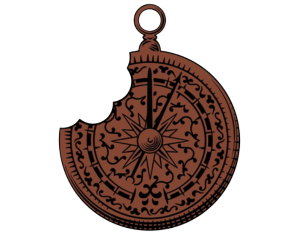Get Started With Craft Chocolate!
Welcome to the world of fine craft chocolate! If you are new to the exploration and appreciation of chocolate, you have come to the right place – a place where chocolate is revered. All the delicious and artisanal chocolate you’ll find at Barometer Chocolate is made in small batches, from scratch, by passionate people who love and respect cacao, the planet, and its inhabitants. If you care about food made with integrity, from rare and precious ingredients, keep reading.
Every chocolate bar can trace its lineage back to a fruit-producing cacao tree located 20 degrees north or south of the equator. More than two hundred years ago, Swedish botanist, Carolus Linnaeus, gave the cacao tree its scientific name Theobrama cacao or “food of the gods.” Since you made it to the second paragraph of this post, it’s probably safe to assume that just like Carolus, you recognize chocolate’s heavenly nature.
Walk into any supermarket and for $3 or less, you can buy a chocolate bar with all kinds of extravagant claims on its eye-catching label. Some people may be surprised to learn that many exceptional chocolate bars can cost $10, $20, or more! There are a number of reasons why this is the case. Truth be told, not all cacao trees and their beans are created equal.
More than 90% of cacao grown worldwide falls into the category of bulk beans or commodity cacao. These common beans are bred for hardiness and high yield, rather than for flavor. In fact, oftentimes, the flavor profile of the beans is poor.
Once harvested, cacao beans are usually fermented to enhance flavor and reduce bitterness. Fermenters of bulk cacao typically are novices in the art and science of fermentation. Fermentation in the absence of great skill and craftsmanship guarantees that nuanced flavors cannot be teased out of the beans, resulting in a product with a flat, or even unappealing, taste. Also, the probability is high that improper drying methods following fermentation will leave the cacao beans with residual moisture. When moist beans are shipped in burlap sacks, they become moldy. Did you realize that those bars you have been ingesting for years may harbor mold? You won’t necessarily taste the mold, and you may not even recognize the poor quality of the beans because they’ve likely been irradiated, over-roasted, and processed with lots of sugar, fat and additives before becoming the $2.99 bars that line the shelves of your local market.
Please don’t be fooled by boastful wrappers that may contain an average or even low quality product within. Bulk beans are adequate at best and tragically flawed at worst. In addition to that, the cacao farmers who grow and harvest bulk beans typically cannot earn a living wage, and sometimes the workers on these plantations are children who are mistreated. There are so many reasons to think twice about purchasing bars made from commodity cacao. Even those bars with wrappers displaying emblems of support for rainforests and farmers may not be living up to their claims as much as they lead consumers to believe.
Barometer Chocolate’s award-winning collection of bars and treats are made from cacao sourced with great care and integrity by makers who partner with farmers and the land. My virtual boutique is a great resource for bars made from fine flavor beans, including true Criollos, like Chuao and Porcelana, which account for less than 1% of the cacao produced worldwide. You will also find a selection of bars comprised of fine flavor beans such as Nacional from Peru and Ecuador, which account for less than 5% of the world’s estimated 3.97 million tons of cacao produced annually.
These rare and prized beans are gems with unique genetic profiles. They are also a product of the terroir from which they hail. There are variations in the beans from season to season due to unpredictable weather conditions. For this reason, craft chocolate makers often indicate the harvest year on their wrappers because nuances in flavor that fluctuate from one harvest to the next are a major part of the appeal.
Mother Nature’s moveable feast comes alive thanks to the skilled hands of makers who roast, sort, crack, winnow, refine and conche cacao beans with meticulous attention. Each type of bean requires a unique process and recipe. The resulting bars offer kaleidoscopic flavor arcs that linger on the palate. By contrast, chocolate bars made from bulk beans come with few, if any, surprises. Sadly, they are nothing more than consistent, soulless, brown rectangles.
Craft chocolate comprised of fine flavor beans is one of the most complex foods you will ever have the pleasure to savor. Martin Christy, a world leader in the field of fine chocolate, asserts that there are twice as many flavor chemicals in cacao as there are in wine. The study of cacao and chocolate is serious business, but I am here to help you find pleasure and no pressure in the selection and tasting process. Stay tuned for upcoming Chocolog posts that will sort the Barometer Chocolate collection of bars into categories, identifying key flavors to help you choose with confidence and joyful anticipation. As always, if you require the assistance of a sommelier, I am here to answer your questions.
For further reading on the subject of cacao, here are my favorite books:
The True History of Chocolate by Sophie D. Coe and Michael D. Coe
The Essence of Chocolate by John Scharffenberger and Robert Steinberg
The New Taste of Chocolate (Revised) A Cultural and Natural History of Cacao with Recipes by Maricel E. Presilla
Making Chocolate From Bean To Bar To S’More by Todd Masonis, Greg D’Alesandre, Lisa Vega & Molly Gore
Bean to Bar Chocolate: America’s Craft Chocolate Revolution by Megan Giller
0 comments


